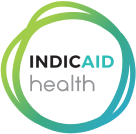Respiratory Health 3
Flu A, Flu B and RSV












At home collection kit. Tests for Flu A, Flu B and RSV. This comprehensive test gives you the ability to test in the privacy of your own home with everything provided to you.
- • Nasal Swab Collection
- • Tested in Certified Lab
- • Results in 2-4 days
- • Virtual Care Included
Testing Recommendations:
Testing for Flu and RSV is vital for accurate diagnosis and timely treatment, reducing symptom severity, and preventing further spread, especially among high-risk populations.
Treatment:
Treatment for the flu often includes antiviral medications if taken early, while supportive care helps manage symptoms. RSV treatment primarily involves supportive care, as there are no specific antiviral drugs. Severe cases may require hospitalization, and it's important to consult healthcare providers for personalized treatment.
Preventing Transmission:
Knowing the specific virus can help prevent its spread to others. Isolation measures can be implemented to limit spread to family members, friends and the community, reducing the risk of further infection.
To prevent the spread of the Flu and RSV, we recommend you stay home when you are sick, avoid direct contact from infected individuals, and clean and disinfect frequently touched surfaces. Additionally, follow local health guidelines and wear masks inside crowded or high-risk settings when advised by authorities.
- 1Register your kit online. Then fill out the label on the back of the registration card. Place label lengthwise on the specimen tube.
- 2Open the nasal swab from packaging. Hold the swab by pinching the handle in the middle of the swab shaft.
- 3Insert the swab 3/4 of an inch into your left nostril. Rotate the swab and scrub the wall of your nostril for 10 seconds. Remove the swab and immediately do the same in the other nostril.
- 4Remove the cap from the specimen tube. Place nasal swab into specimen tube and carefully break the swab at the scoreline. Recap the specimen tube tightly.
- 5Place the specimen tube with the nasal swab tip into the specimen bag, then seal the bag.
- 6Place specimen bag into your empty INDICAID health box. Place the box inside the return envelope. Seal the envelope for shipping.
- 7Schedule a pickup or drop off the envelope at your local UPS store.
- 8You're all done! We will reach out as soon as we have gotten your sample at the lab.
Influenza A: This type of influenza virus is more diverse and can infect a variety of animals, including birds, pigs, and humans. There are various subtypes of influenza A, such as H1N1 and H3N2, which are known to circulate in humans.
Influenza B This type of influenza virus primarily infects humans and is not divided into subtypes. Influenza B viruses do not infect animals as widely as influenza A viruses do.
Respiratory Syncytial Virus (RSV) is a common respiratory virus that can affect people of all ages. It is a leading cause of respiratory infections, especially in young children and infants.
Symptoms of Influenza A are similar to those of Influenza B and can include:
- • Fever
- • Cough
- • Sore throat
- • Body aches
- • Fatigue Headache
- • Chest tightness
Symptoms of RSV can include:
- • In Older Children and Adults:
- • Cold-like symptoms: Can range from mild to moderate.
- • Cough: May be persistent. Fever: Typically lower (100-102) than in infants.
- • Wheezing: Particularly in individuals with asthma.
- • Severe Cases:
- • Bronchiolitis: Inflammation of the small airways in the lungs.
- • Pneumonia: Infection of the lungs.
Both Influenza A and B are spread through respiratory droplets when an infected person coughs, sneezes, or talks.
Flu A & B can also spread by touching surfaces contaminated with the virus and then touching the inside or the nose or mouth.
RSV spreads through respiratory droplets when an infected person coughs or sneezes.
The RSV virus can survive on surfaces for several hours, so touching a surface with the virus and then touching the inside of the nose or mouth can lead to infection.
